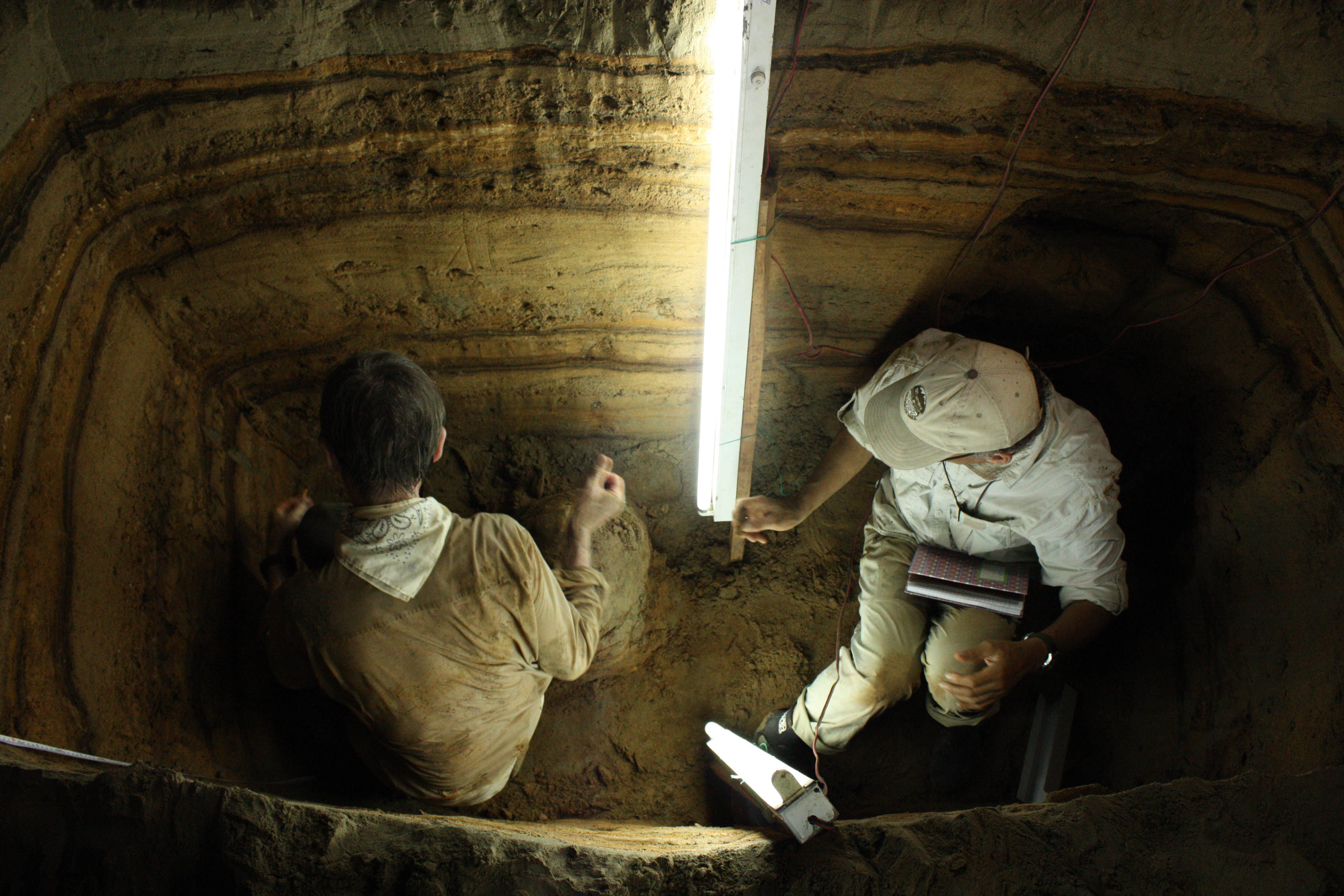A Sea Cave in Indonesia Contains a 5,000-Year Record of Tsunamis
Layers of silt show just how unpredictable earthquakes are.

Earthquakes are incredibly capricious. New data, from a cave in Indonesia, confirm that, even in hindsight, we can’t know with any precision when they’ll happen, how strong they’ll be, or what kind of tsunami they may produce.
A team of researchers from Singapore, Indonesia, Ireland, and the United States uncovered a 5,000-year record of tsunamis in the layers of sediment at the bottom of a cave on the Indonesian coast. The deepest layers date to roughly 7,400 years ago, while the top layers are about 2,900 years old. More recent sediment was washed away by the massive tsunami that struck the region in 2004, but rocks at the entrance of the cave protected most of the silty record. Dark layers are made up of droppings from bats living in the cave and other organic debris, while the lighter bands of silt were brought in by tsunamis.

The earthquakes that caused these tsunamis, and the 2004 catastrophe, occurred along the Sunda Megathrust, a fault about 3,300 miles long that stretches from Myanmar to Sumatra. The layers of silt show an erratic series of 11 earthquake events. Out of the 5,000 years of the record, one century was unfortunate enough to see four tsunamis, while two entire millennia saw none. A couple of general patterns were discernible, though. Smaller earthquakes tend to have happened in clusters, while big earthquakes occurred after long periods of quiet along the fault. It’s not enough information to help scientists predict future earthquakes there, but it’s clear evidence of the unpredictability of the Sunda Megathrust.





















Follow us on Twitter to get the latest on the world's hidden wonders.
Like us on Facebook to get the latest on the world's hidden wonders.
Follow us on Twitter Like us on Facebook